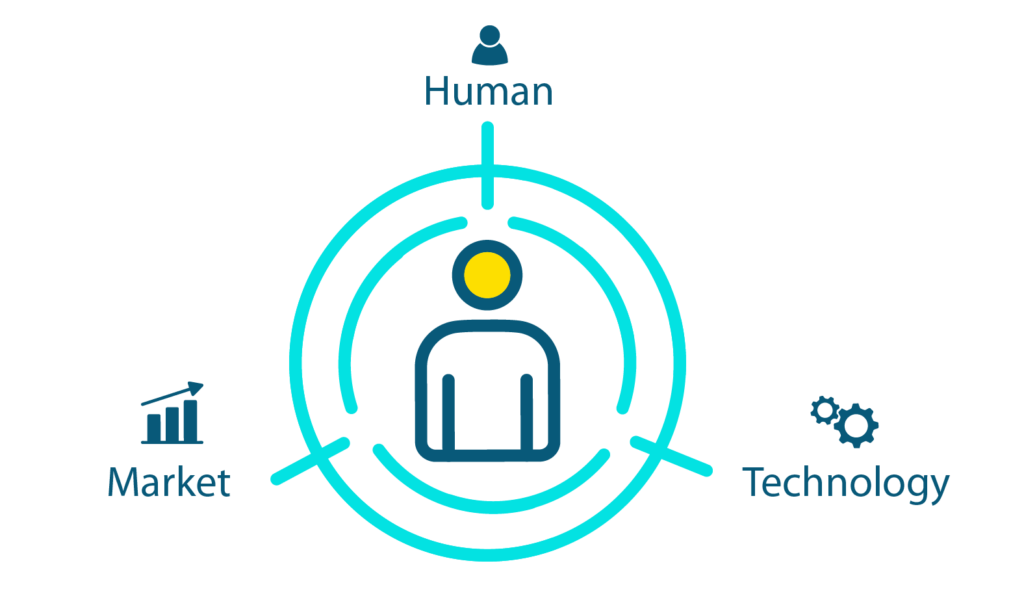Organizations adapted to the disruption caused by the pandemic with flexibility by finding new ways of working. Project Management Institute, (PMI), has termed these organizations as gymnastic enterprises.
According to PMI’s, even though many projects were put on hold, many were completed on time, met their business goals, and were completed within budget than last year.
They were propelled into the world of digitalization and had to rethink the way they worked.
Thanks to advanced project requirement management tools, they have been able to automate workflows, provide insights and analytics, and take advantage of the latest technologies.
When these features are combined into a single platform, project management teams are presented with a solution that is not only preferable but also beneficial in many aspects. Its potential has been recognized by companies all over the world, so much so that global project management trends have a lot to say about how these systems fit in the companies’ business strategies.
The continued demand for technological innovation and digital transformation concerning project management software’s role in the future is made apparent by these top 6 recent project management trends in 2023.
What are the most important trends in project management?
1. AI Automation and Implementation
Among the emerging modern trends in project management, the most apparent is in terms of artificial intelligence use and implementation. This technology is beneficial in gaining analytics that companies can use to achieve transparency and productivity — knowing which projects are more successful allows teams to accurately identify what factors are essential if the company is to cut down costs and risks. This feature of project management systems is the primary reason why the use of such software has seen an upward trend in recent years.
Let’s take a look at some examples:
- A few companies are already using automated and machine learning technologies to receive notifications about potential problems the business may encounter. For instance, suppliers can now receive notifications about potential roadblocks such as weather, traffic, etc.
- Promising research is being conducted to build machine learning systems to augment a project manager’s decision-making ability by analyzing data from multiple projects in the project portfolio.
2. Globalized Project Management
Companies and teams became even more globalized as working conditions became more flexible with the forced work from home due to the global pandemic. It had already taken roots long ago. The number of people who work from home has increased by 140% since 2005. Even though the companies have started to work offline, they have adopted a hybrid model of working for the long haul.
According to Mercer, 70% of companies plan to adopt the hybrid work model.
While this remote work and hybrid model trend does allow for having the opportunity to hire creative and innovative people all around the world, it presents challenges to project management. Specifically, it makes collaboration hard if team members are unavailable for specific schedules due to different time zones.
Project management software offers a tool that can potentially solve this problem. The platform allows all brainstorming activities and conversations to take place in one environment, thereby making it possible for companies to take advantage of worldwide talent.

3. Hybrid Project Management
The third emerging trend in project management is the increased use of the hybrid project management approach, which refers to how project teams are using a combination of both the Waterfall methodology, which is the detailed methodology, and Agile methodology, the fast-paced approach to project management. The goal of a hybrid approach is to elevate teams in such a way that they become aware of the detailed lifecycle of a project while simultaneously introducing the skills to help them modify the plan when it is needed. In this regard, the best project management tools are expected to become a symbol of the hybrid project management methodology in the coming years as it is capable of achieving a level of detail and flexibility that may be beyond human capabilities.
How do you prepare for this trend, and how do you know what will work for you?
PMs must learn about the latest methods, revisit some of the basics, and gauge how to accurately apply them to get a better understanding of the project scenario and its aspects such as the clients, the organizational goals and the purpose of the project, and the team’s mindset.
There’s a growing need to be more flexible in approach and create a project plan that allows you to lead projects unconventionally and understand various parts of diverse methodologies that cater to your team’s needs, perceived time frame, environment, end goals, etc.
4. Stakeholder-Centered Design
The fourth latest trend in project management is the increasing focus on providing transparency for the sake of the company’s stakeholders and building products centered on the human perspective. According to Dave Thomsen, VP of Wanderful Media, “Pixel-perfect mockups and Dribble-friendly UI elements are just one component of a well-designed product. It is more of ‘Design Thinking’ – a repeatable, human-centered method for creative problem solving and innovation. This holistic approach to design takes inspiration from real people, works within market and technological constraints, and considers every product touch-point as an opportunity to surprise, delight, and deliver benefits to users.
As a result, project management software tools also have followed suit and strived to provide a system that helps achieve this goal. Through these tools, project managers can converse, brainstorm, and update stakeholders. Doing so makes it easier for investors and consumers to support the launch of any project that companies release as part of their business strategy. This benefit significantly contributes to all statistics that are indicative of project management software as a vital tool in launching high-performing projects.

5. Soft Skills
Soft skills have become a vital part of project management. Project managers have deal with project stakeholders, clients, and project teams. Mitigating risks, inner conflicts, and keeping the project team motivated throughout will fall on their shoulders. Having high emotional intelligence will also become an important asset in project management.
Organizations should start investing in resources and programs that help develop soft skills among their employees.
6. Predictive Data and Simulation-Based Analyses
The last and most important emerging trend is the increase in the demand and necessity of predictive data and simulation-based analyses. The most challenging and demotivating outcome in managing multiple projects is when projects lead to unexpected consequences that can threaten their success. As a result, project managers, who are considered as the team’s frontline defense against these adverse outcomes, are starting to look for a solution that will provide the knowledge they need to account for the unexpected. Because employing project management software as the solution to the problem is cheaper than having to compensate for project failure costs, companies are all too eager to see if such platforms can provide the information they need. As a result, project management software trends in terms of use and attention are only expected to see an unprecedented increase in the coming years.
Intelligent project management software can provide a treasure-trove of big data to project managers that involves analyzing an individual’s habits, the preferred mode of communication, areas of interest, time spent on a task, and other attributes that can make their work powerful and productive. With predictive and data analytics capabilities, project teams can make full use of KPIs and benchmarks, implement them proactively by establishing data-backed best practices, and deliver better projects faster.
What is the future of project management?
Considering the competitive landscapes of most markets, companies cannot afford to suffer the consequences of project failure. If they are to stand above the competition, projects must be launched successfully. The latest trends of project management software make it apparent that the future of this aspect of business operations includes the use of technology. Thus, if they want projects to succeed and companies to perform, you should consider implementing project management solutions to make your, your team, and your stakeholders’ lives easier.






0 Comments